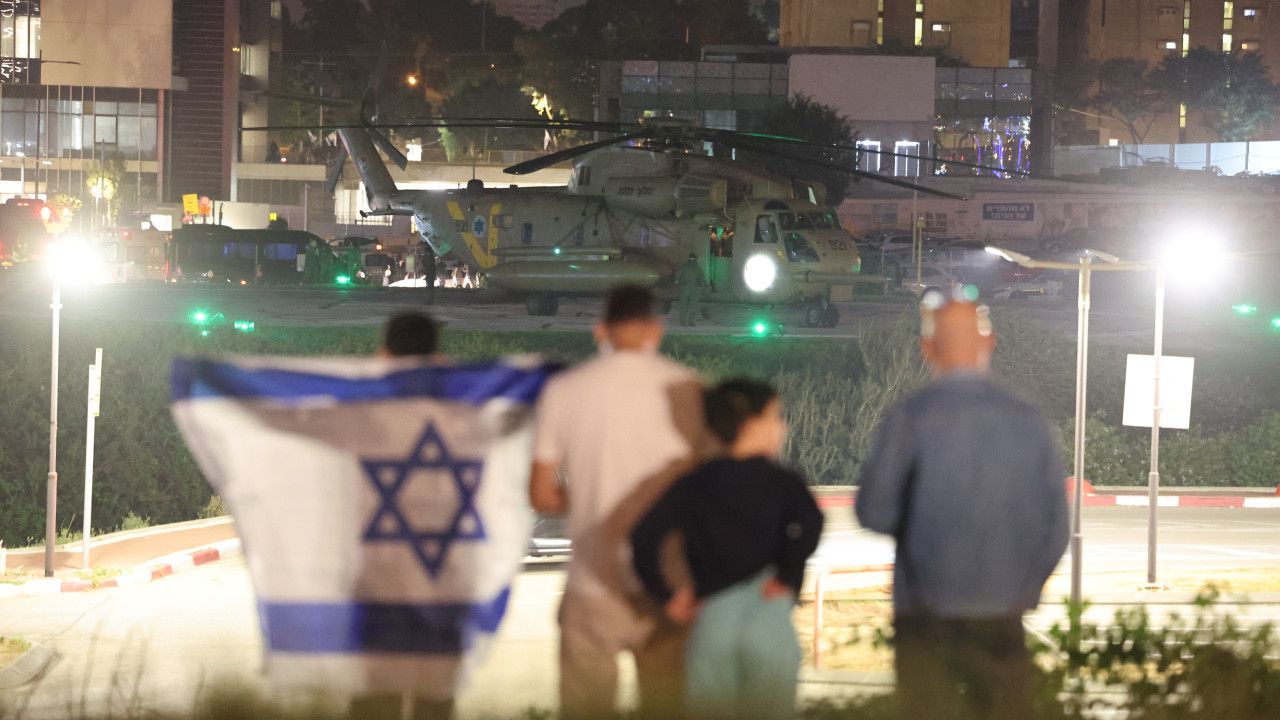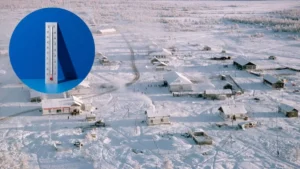
Afollowing the four-day truce, mediated by Qatar and Egypt, and which came into force at 7 am local time (5 am in Lisbon), humanitarian aid caravans were able to enter the Gaza Strip, which was isolated and on the verge of collapse, without electricity, water and fuel, and where health units closed one after another due to lack of conditions, with 2.4 million inhabitants of the enclave facing water and food shortages.
The pause in hostilities came into force after a night in which Israel continued to attack the Gaza Strip and in which Hamas launched missiles at two Israeli settlements located near Palestinian territory, whose inhabitants had already been evacuated.
The last dawn was like any other after more than a month and a half of intensive bombing by Israeli forces in the Palestinian enclave controlled by Hamas, followed by a ground invasion with the declared purpose of annihilating the Islamist movement, provoking, according to the Local government, around 15 thousand dead, mostly civilians, 33,000 injured, and 1.7 million displaced, according to the UN, in urban agglomerations reduced to dust.
However, the columns of black smoke that hovered on the horizon of the Gaza Strip at the time of the beginning of the truce were dissipated by the day’s events, also dispelling fears about a fragile agreement since the bloody 7th of October, when Hamas fighters They invaded southern Israel and massacred around 1,200 people, according to Tel Aviv authorities, and took more than 200 hostage.
At 4 pm local time (2 pm in Lisbon), Hamas continued to comply with the agreement and began to release the first part of the hostages involved in the understanding, 24 in total, including 13 Israelis, 10 Thais and one Filipino, handed over to the International Red Cross .
At the end of the day, the Minister of Foreign Affairs, João Gomes Cravinho, confirmed that Adina Moshe, 72 years old, one of the freed Israeli hostages also had Portuguese nationality.
“We had hope and it has been confirmed,” commented the head of Portuguese diplomacy, who is today visiting Israel and the West Bank.
Four children, one of whom is 2 years old, and six elderly women over 70 are also on the official list of hostages released today by Hamas and, according to Israeli media, 12 belonged to the ‘kibbutz’ Nir Oz, one of the hardest hit by the Hamas in its brutal attack on October 7th, where around 80 people were kidnapped.
The hostages were transported in ambulances to Kerem Shalon, a border post between Egypt and Israel that also connects to the Gaza Strip.
According to the plan, once they arrived on Israeli territory, the hostages were taken in military helicopters to Hatzerim, an Air Force military base in the Negev desert, near the city of Beersheva, and from there to five hospitals in the vicinity of Tel Aviv.
Several televisions showed live the hostages’ exit through Rafah, images in which an elderly woman was seen greeting people gathered near the border terminal.
Similar to what happens every Friday, today, representatives of the hostages’ families and hundreds of Israelis organized a Shabbat reception, in memory of the more than 240 kidnapped by Hamas in the center of Tel Aviv, which was attended by the minister of War Cabinet, Benny Gantz.
Later, it was up to Israel to fulfill its part of the agreement and release 39 Palestinians who were in three Israeli prisons. Twenty-eight were left in the West Bank, while the other 11 were taken to East Jerusalem.
The group included 15 minors and 24 women, according to the list released by the commission responsible for Palestinian Authority prisoners, on a day marked by reunions but without exuberant celebrations in Israel, where the police announced that it was banning any celebration of the release of prisoners in Jerusalem. .
The truce allowed the UN to increase the delivery of humanitarian aid in the Gaza Strip, where 137 trucks were unloaded today, according to the United Nations agency responsible for humanitarian coordination (OCHA), the “largest humanitarian caravan” to enter the enclave since the beginning of the conflict.
The agency specified that 129 thousand liters of fuel also managed to cross the border into the territory and that 21 patients in critical condition were removed from the north of the enclave.
In the aftermath of the day, Israeli Prime Minister Benjamin Netanyahu welcomed the release of the first Hamas hostages and promised the return of “all those kidnapped”.
“We have completed the return of the first of our kidnapped people. The children, their mothers and other women. Each one of them is a whole world,” said the head of government in a video message, although he has already warned that this truce does not mean the end of fighting with Hamas.
At the end of the day, the Palestinian movement released a video showing some of its militiamen, hooded and heavily armed, handing over freed children and elderly people to members of the Red Cross.
In Washington, US President Joe Biden reiterated calls for a “two-state solution” in order to “end the cycle of violence in the Middle East” and stated that the release of the first hostages “is just the beginning”, further estimating that there are “real possibilities” of prolonging the truce.
It is estimated that the Palestinian militias in Gaza have around 240 people hostage, around 210 in the hands of Hamas and another 30 in the hands of Islamic Jihad.
Israel and Hamas have reached an agreement for a ceasefire, which will allow the release of 50 Israeli hostages that Islamist militias are holding inside the Gaza Strip, in exchange for the release of 150 Palestinian prisoners. In both cases, they are women and minors.
The truce that came into force today may be extended for another day up to a maximum of ten days, each of which will be a test for two parties that have not experienced dialogue for a long time.
Read Also: EU defends that truce with Hamas be prolonged for humanitarian purposes
All News. By the Minute.
Seventh consecutive year Consumer Choice for Online Press.
Download our free App.
Source: https://www.noticiasaominuto.com/mundo/2448367/o-1-dia-do-cessar-fogo-no-medio-oriente-eis-o-que-se-passou





